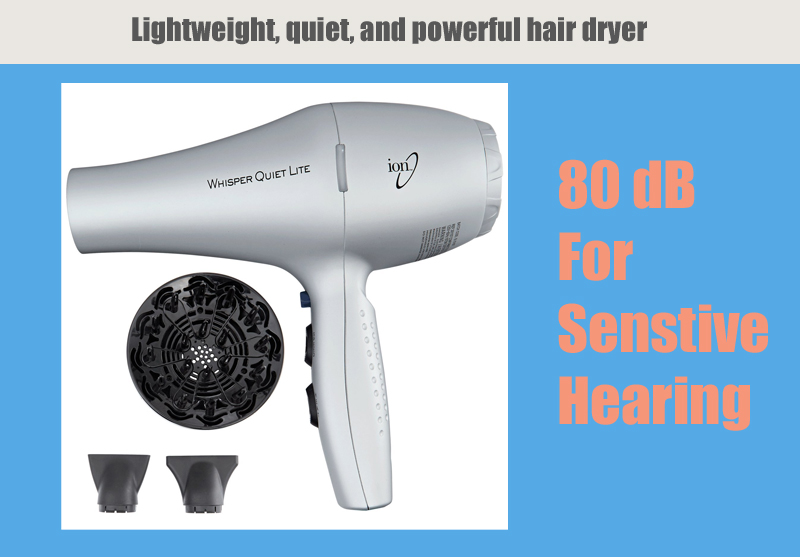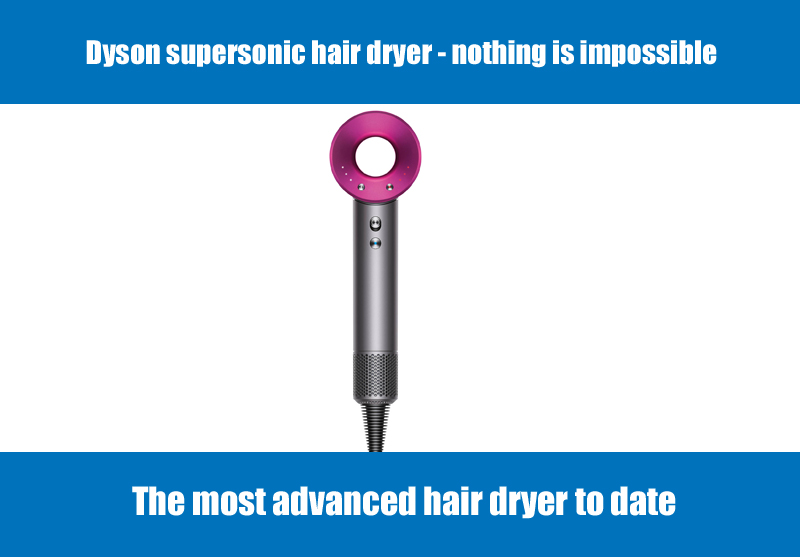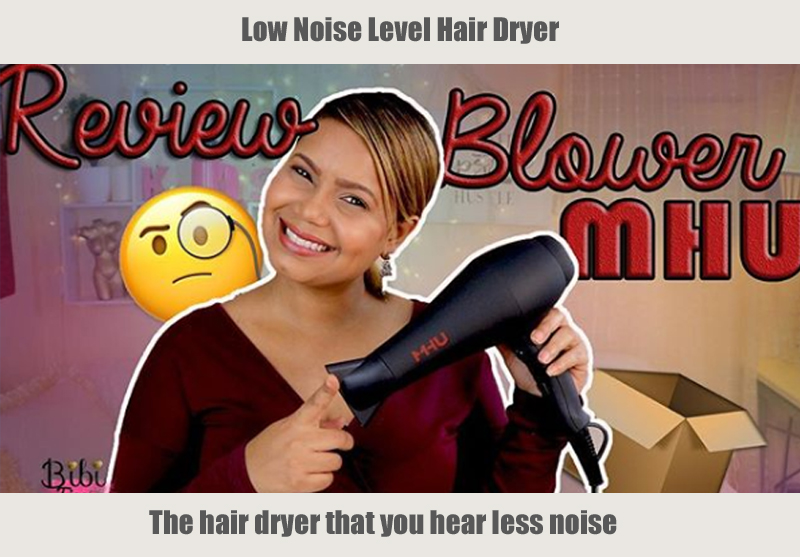Other than heating element (ceramic), ionic, power (watts) and airflow (m3/ hour), and weigh, you may pick your first hairdryer for their calmness and here are the quietest hair dryers according to their noise level.
- Most one-step hair dryers and volumizers produce the noise level less than 85dB.
- It’s noisy while blow-drying – why not wearing earplugs.
- Lower noise level less powerful?
Ion Whisper Quiet Lite Ionic – Ceramic Hair Dryer

Ion Whisper Quiet as its name indicates this hair dryer is for those who are quite sensitive hearing.
Dyson supersonic hairdryer

Either using noise level app on phone or sound meter we were able to get 79 decibels at a distance of 15 cm.
MHU Professional Salon Grade

Most professional hair dryers are quieter than average dryers you could find on the market, but this MHU hair dryer’s loudness level is somewhat comparable to professional tools.
What is a decibel (“dB”)?
A decibel (dB) is a unit of measurement of sound intensity. The higher the dB is, the more you feel it noisy.
The dB is zero when the sound level is equal to the reference level, since dB calculated = log(sound level/reference level) = log(1) = 0
The dB can get negative values for example -2 when the sound level is lower than the reference level 100 times. (dB = log(1/100) = -2)
If you are exposed to noise level over 85dB for a long period of time you may end up in hearing impairment.
How to measure the noise level of a hairdryer?
Most commercial Digital Sound Level Meter (range 30 – 130dB) can measure the noise from a hairdryer.
The meter is placed in the same distance (6 inches for example) to the hairdryer as it is closed to your ears while performing blow-drying. The noise level depends on the distance between the sound meter and the source of the sound.
You can also measure the noise level by App (iOS, Android) but this is less accurate than using noise level meter.
For some people who is sensitive to the sound, the noise level matters
Some hair dryers’ noise levels when operated can go over 90 dB. Typically from 85dB to 95 dB. Human ears are in a comfort zone with sound, whose noise level is less than 85dB.
If you are in a closed room and use a hair dryer quite often, hearing those noises may be stressful, so it’s better to pick quieter products.
The noise level is at its peak when the hairdryer is set to its highest setting.
For your reference here are other models and their noise level
| Model | Noise Level |
| GHD Air Dryer | 103dB |
| Ion Whisper Quiet Lite Ionic | 80dB |
| Dyson supersonic hairdryer | 79dB |
| MHU Professional Salon Grade | 85dB |
| Dyson AirWrap | 82dB |
Sure, here’s a comparison of the noise levels and decibel ratings of the three hair dryers in a tabular form:
|
Hair Dryer |
Decibel Level |
|
Ion Whisper Quiet Lite Ionic – Ceramic |
60 dB |
|
Dyson Supersonic Hair Dryer |
68 dB |
|
MHU Professional Salon Grade |
80 dB |
As you can see, the Ion Whisper Quiet Lite Ionic – Ceramic Hair Dryer is the quietest of the three, operating at a low decibel level of 60 dB.
The Dyson Supersonic Hair Dryer is also relatively quiet, operating at 68 dB.
The MHU Professional Salon Grade, on the other hand, operates at a higher decibel level of 80 dB, which may not be suitable for those who are sensitive to noise.
Things to Consider When Choosing A Quiet Hair Dryer
When it comes to choosing a quiet hair dryer, there are a few things to keep in mind that’ll help you avoid waking up the whole house:
Decibel level: You don’t want to sound like a jet engine taking off in your bathroom, so look for a hair dryer that operates at a low decibel level of 85 or lower. Trust us, your roommates will thank you.
Motor power: If you don’t want to feel like you’re standing next to a jackhammer, choose a hair dryer with a lower wattage motor. It’ll still get the job done without making you lose your hearing.
Design: To minimize noise, go for a hair dryer with sound-dampening features like insulated housing or a diffuser. Your ears will thank you.
Heat and speed settings: If you’re trying to keep things on the down-low, opt for lower heat and speed settings. Plus, you’ll avoid turning your hair into a frizzy mess.
Weight and ergonomics: Don’t break your arm trying to style your hair with a clunky, heavy hair dryer. Go for a lightweight, ergonomically designed model that’s easy to hold and maneuver without making a ruckus.
Brand reputation and reviews: Do your research and read reviews to find a hair dryer that’s known for being quiet. It’s always good to know what you’re getting yourself into.
By considering these factors, you can find a hair dryer that won’t wake up the whole neighborhood (or your roommates) while still getting the job done.
Frequently Asked Questions
Q1. What is the on the market?
Ans. There are five of the on the market. To qualify as a , it is recommended that it is below 60 decibels for the least amount of . These models are:
- Dyson
- T3 Cura Luxe
- MHU Professional Salone Grade
- Harry Josh Pro Tools Ultra Light Pro
- Centrix Q-Zone
Q2. What are the advantages of a ?
Ans. The advantages are that if you need to style your while your household is sleeping, you won’t wake everyone up. They also tend to be of better quality and dries faster.
A has added blades found in the internal of the . Companies discovered that the more blades were added, the was less, and the better the .
At about 13 blades over the standard 11, they were able to create ultra-fast motors that emit a sound below what resonates with a human ear.
Q3. How many decibels should a have?
Ans. It should have below 60 decibels to be classified as a .
Q4. Why is a attachment important for quiet dryers?
Ans. A will reduce the level of the emits. They dampen by creating more room for air to pass. The only challenge is that will make the curly and wavy, but not straight.
Diffusers are also ideal for eliminating and will not strip your of moisture. They are gentle to use for and will provide it with more of a bounce.
If you often do deep conditioning, soft bonnet or hooded hard hat hair dryers have much lower noise levels.

Its no good giving noise levels like you have at 15 cm from the meter to simulate drying hair.
Industry standards for noise level measuring for ANYTHING are always at a distance of 100 cm or 1 metre. This is used worldwide!